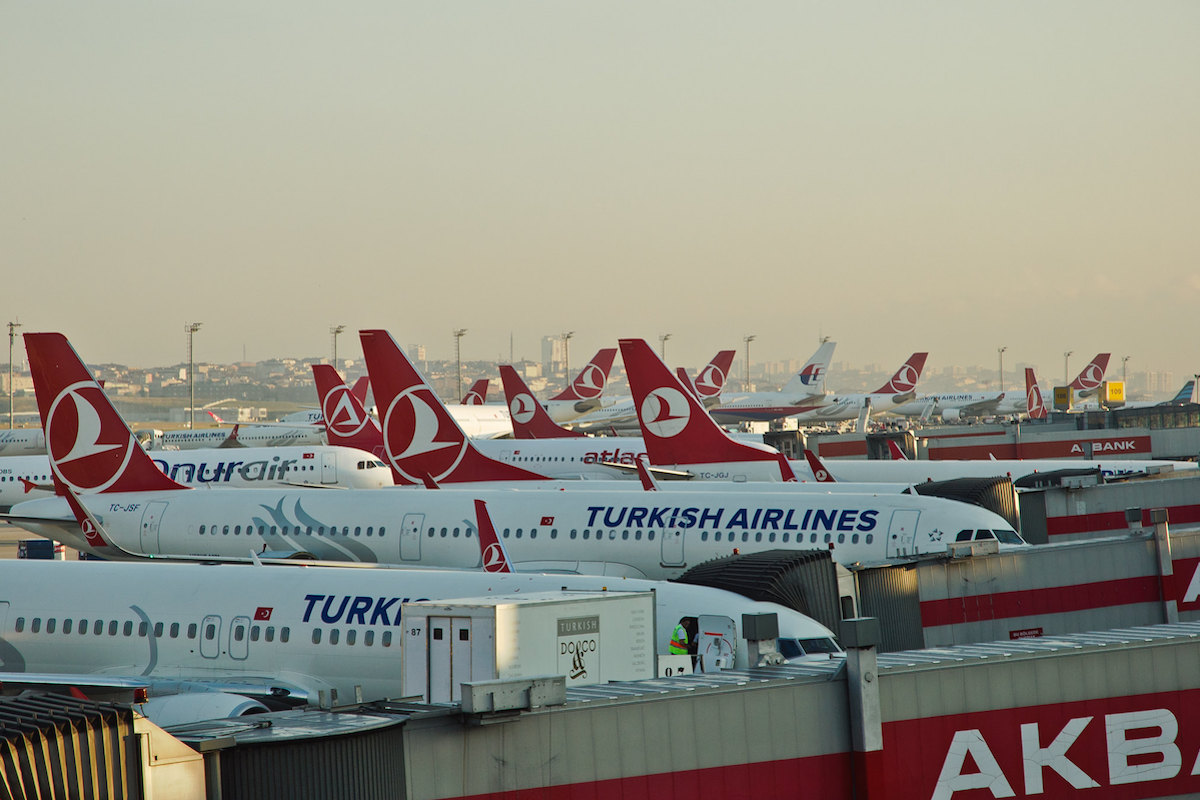Turkish Airlines Emerges as First European Carrier to Fully Recover

Photo Credit: Flickr / Caribb
Turkish Airlines stands alone among Europe's network airlines as having fully recovered from the Covid-19 pandemic due to what executives see as the benefit of its early return to many parts of the world.
“Turkish continues to stand out among its peers continuing to expand its global network, market share, and profitability," Turkish Chairman Ahmet Bolat said during the airline's second-quarter results call Thursday.
That performance was on full display in the June quarter. Compared to 2019, revenues increased nearly 43 percent to $4.5 billion, passenger traffic was up nearly 12 percent on a 12.3 percent increase in capacity, and yields were also up 12 percent. Cargo, a business that boomed for many airlines during the pandemic, revenues soared 171 percent to $1.1 billion. All in, Turkish turned an operating profit of $520 million, and a net profit of $576 million.
Those are impressive results compared to Turkish's European network peers. Air France-KLM revenues were 11.4 percent higher on capacity that was 18 percent lower than in 2019 during the second quarter. International Airlines Group revenues were down 12 percent on 22 percent less capacity. And the Lufthansa Group revenues decreased 12 percent on 26 percent lower capacity.
But Turkish is not simply another European network airline. Its Istanbul hub is a hybrid of the Gulf carriers' all-international super-connector hubs in Abu Dhabi, Doha and Dubai, and a traditional European hub with a combination of thin, short routes and long-haul intercontinental flying. That hybrid allows Turkish to serve more smaller destinations that may only make sense with smaller narrowbody aircraft — the fleets of Emirates, Etihad Airways, and Qatar Airways are overwhelmingly made up of widebody jets — in Europe as well as in Central Asia and Africa, thus further boosting connectivity. Turkish also has a large domestic market.
Turkish added five new markets in the second quarter: Bukhara, Uzbekistan; Juba, South Sudan; Milan's Bergamo airport; Rize, Turkey; and Tivat, Montenegro. Only two of these destinations was served by the airline's European or Gulf network competitors: Bergamo and Tivat by the European airline groups, according to Cirium schedule data.
"The local demand is very strong. Our network is huge, and [the] possibility to connect is high," Turkish Chief Financial Officer Murat Şeker said. He added that the decision to resume flights earlier than many competitors gave Turkish a "first mover advantage" in the travel recovery.
Asked about the impact of the war in Ukraine on Turkish, Şeker said it was mixed. For one, all traffic from Ukraine, where the airline served six destinations prior to the Russian invasion, has ceased. However, Turkey's decision to not restrict flights to and from Russia has left Turkish as one of the few airlines continuing to serve the aggressor nation with flights to 10 airports. Şeker said yields are up on routes to Russia, which has offset the loss of passenger traffic.
Of course, Turkish is not immune from the spike in global energy prices since the invasion. The carrier's fuel expenses jumped nearly 86 percent to $1.8 billion in the second quarter compares to three years earlier. However, Şeker said its fuel hedge book has protected it from the worst of the surge in fuel prices.
But broadly, Turkish's costs are under control compared to its European peers. Unit costs excluding fuel fell 10.8 percent compared to 2019 in the June quarter. The same metric increase 2.4 percent at Air France-KLM, 21.3 percent at IAG, and 8.5 percent at the Lufthansa Group.
Turkish is bullish about its prospects. The airline plans to grow passenger capacity 10-20 percent year-over-three-years in the third quarter, and another 5-15 percent in the fourth quarter. For the full year, Şeker said capacity will "high-single digits above 2019." It has named 14 cities it plans to serve in the future; these include long-haul flights to Denver and Detroit, as well as shorter hops to places its main competitors do not serve, like La Coruna, Spain, and Port Sudan, Sudan. The growth will be supported by the net addition of roughly 15 new aircraft.
“Since the beginning of the third quarter, passenger sales remained strong," Şeker said on the economic outlook. Turkish expects strong demand through at least October based on current data, he added.
Despite this, Turkish is "closely monitoring our bookings and other leading macro indicators, to see if there are any signs of weakening in coming months," Şeker said.
Turkish expects full-year 2022 revenues to come in above 2019 levels, Şeker said. Yields are forecast to rise by "double-digits," and unit costs excluding fuel to decrease by single digits.
